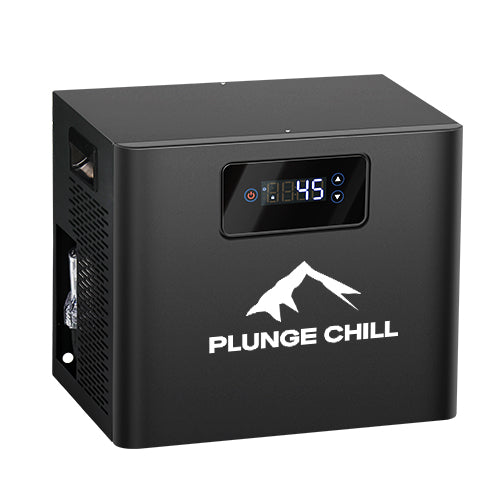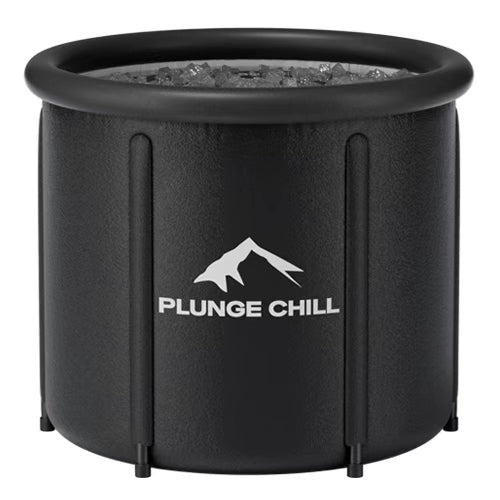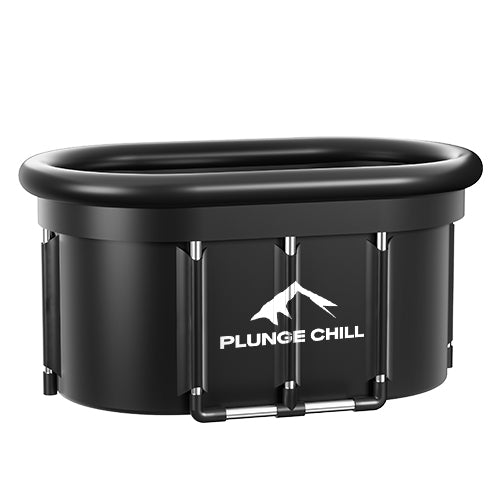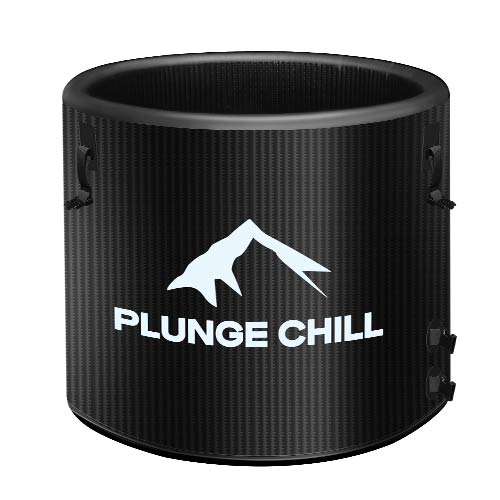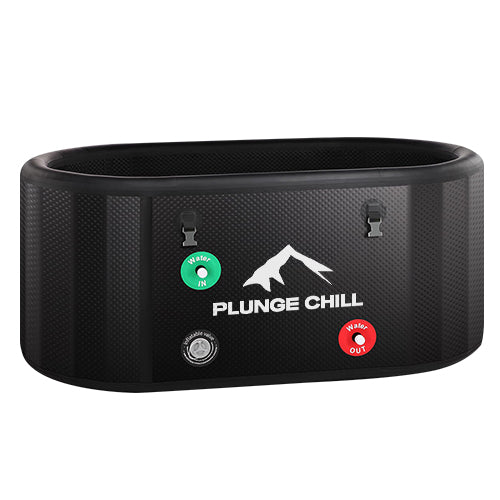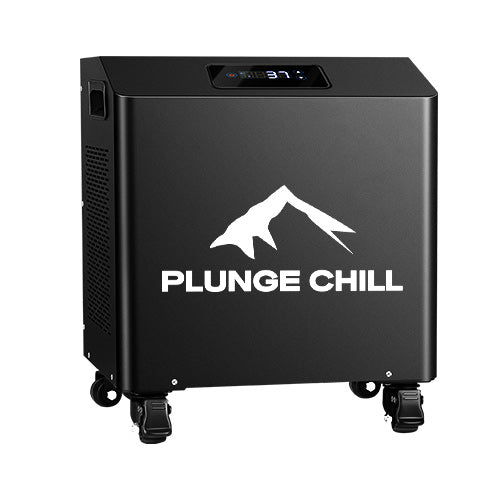Do you wake up tired even after a full night's sleep? Feel constantly stressed, run-down, or like your body can't keep up with daily demands? Yes, modern life leaves millions of people feeling drained, getting sick frequently, and struggling with low energy that just won't go away.
What if there was a simple, scientifically-backed way to reset your body's stress response, boost your immune system, and help you feel more resilient? Cold plunge therapy might be the answer. This guide explains what it is, how it may help strengthen your immunity, and how to start safely at home.

What is Cold Plunge Therapy?
You’ll understand the immune effects better when you first see how a plunge fits into daily life.
Cold plunge therapy means a short, planned dip in cold water. At home or the gym, tubs usually sit between 50–59°F. You set the temperature, set a timer, get in, breathe through the first minute, get out, and warm up.
While it may seem like a modern trend, cold water therapy spans thousands of years:
- Ancient Greeks: Used cold water as medicine
- Nordic cultures: Embraced ice swimming for vitality
- Finnish tradition: Combined saunas with cold plunges for centuries
- Chinese medicine: Incorporated cold therapy for over 3,000 years
Today's elite athletes like LeBron James and Tom Brady popularize ice baths, but benefits extend far beyond sports. Scientists call this "hormetic stress"—beneficial stress that makes you stronger, like exercise for your immune system.
The key and the difference is control: today's cold therapy uses planned temperature and timing to get exactly the results you want.
How Does Freezing Water Actually Boost Your Immunity?
You just saw what a plunge is. Now connect it to what your body does in those minutes and why that pattern may help immunity over time.
A plunge is a small, brief stress by design. Your nerves, blood vessels, and immune signals respond, then settle. Used often, this can guide your system toward a steadier middle—ready to act, but less likely to overreact.
“Why Do I Feel a Jolt at First—and How Does That Relate to Immunity?”
When you jump into cold water, the first thing you feel is a sharp gasp. This happens because of your sympathetic nervous system, which is like a “go” button for your body. Cold water quickly raises adrenaline (also known as epinephrine), which makes you feel more alert.
In a study where people practiced cold exposure and breathing techniques, they showed higher adrenaline levels and a smaller increase in inflammation after an immune challenge. In simple terms, their bodies handled stress better.
Plain takeaway: A short cold plunge gives your system a quick boost, helping you react to stress in a balanced way—this can support your immune system’s response.
“What Happens to My Blood Flow, and Why Should My Immune System Care?”
Cold makes small vessels in your skin, hands, and feet tighten—this is vasoconstriction (narrowing). Warm blood shifts to your core to protect heat.
After you get out and rewarm, vessels open—vasodilation (widening)—and blood rushes back to your limbs.
That pump-like cycle moves fresh, oxygen-rich blood and the white blood cells it carries throughout your body.

Many people say they feel really clear and calm after cold plunging. This makes sense because of how the blood flow and nervous system change.
“Does Cold Reduce Inflammation—or Does It Just Numb Me?”
Some inflammation helps you heal. The problem is chronic, low-grade inflammation that lingers. Research shows cold exposure can reduce inflammatory markers like C-reactive protein and help modulate immune responses. Short, careful cold dips appear to steady inflammatory signals rather than shut them down completely.
Plain takeaway: With sensible doses, cold may help nudge inflammation toward a healthier balance.
“Do Hormones and Immune Messengers Actually Change?”
Yes. In the PNAS trial above, trained volunteers showed a strong adrenaline rise, higher interleukin-10 (an anti-inflammatory signal), and lower pro-inflammatory cytokines during a lab immune challenge. In everyday words: the body mounted a response but didn’t “run hot.” This doesn’t mean cold prevents illness. It suggests your system may handle stress without overshooting when you practice regularly.

“Where Does Brown Fat Fit Into This?”
You have small amounts of brown fat (brown adipose tissue; it's like your body heater). Brown fat burns calories to make heat. Regular cold can make it more active, which improves cold tolerance and may slightly raise daily energy use. It isn’t a direct immune fix, but it supports the larger pattern: your body becomes more efficient at handling cold, which keeps stress signals shorter.

“So… Does This Mean I’ll Never Get Sick?”
No. Cold plunges are not a cure or a shield. Think of them as training for your stress response—one tool alongside sleep, good food, exercise, and sunlight. They help your body handle stress better, but germs can still get through.
It's like training your immune system to be a calm professional instead of a panicky guard—but sometimes the bad guys still sneak in.
What Other Benefits Come With Cold Plunges?
Immune balance is one reason to practice. The everyday wins keep you consistent.

- Mental Health: It increases dopamine (feel-good brain chemical) by 250%, making you happier, less anxious, and more focused.
- Sleep Quality: It boosts melatonin (natural sleep hormone) production, helping you sleep deeper and wake up refreshed.
- Metabolism: It can increase metabolic rate by up to 350% (fat-burning process) during exposure, helping you burn calories and build cold tolerance.
- Recovery: It speeds up healing and reduces muscle soreness, helping your body bounce back faster after workouts.
- Heart Health: It strengthens your cardiovascular system (heart and blood vessels), improving blood flow throughout your body.
So by doing cold plunge, you can not only strengthen your immune system but also feel happier, sleep better, and recover faster from workouts. But that works only when you can do it safely and regularly. For beginners, there's a lot to pay attention to.
How Should Beginners Start Cold Plunging?
These steps match the science above and keep the dose safe.
- Temperature: start at 55–59°F. Use a chiller from Plunge Chill for steady temps.
- Time: 1–3 minutes first; 3–5 minutes once it feels manageable.
- Breathing: slow exhales help the early shock—try in 4, out 6.
- Frequency: 2–4 sessions per week. Home setups make this much easier.
- Warm-up: dry off, add layers, walk or move for 5–10 minutes, sip something warm.
- Stop signs: chest pain, strong dizziness, confusion, or hands so numb you can’t control them—end the session and warm up indoors.

Who Should Be Careful or Speak With a Clinician First?
Cold is a strong stimulus. That’s why it helps—and why screening matters.
According to Cedars-Sinai guidelines:
If you have heart disease, rhythm problems, uncontrolled high blood pressure, severe circulation issues (including Raynaud’s), cold-triggered asthma, significant neuropathy, thyroid disease, or you’re pregnant/postpartum, get medical advice before you plunge.
Hospitals also warn about frostbite and hypothermia when people go too long or too cold. Short sessions and gradual steps are the safest path.
Perfect Candidates:
- ✅ Healthy adults seeking immune boosts
- ✅ Athletes wanting faster recovery
- ✅ People with chronic stress/mild anxiety
- ✅ Those wanting better sleep/mental resilience
- ✅ Good cardiovascular health
What Else Helps the Science Work For You?
The key shifts—nerves, blood flow, and inflammation signals—matter most when you repeat them consistently. Keep the water within a safe range, log minutes and how you feel, and build a routine you can sustain. A stable setup—same temperature, clean water—makes this easy.

Bottom Line (And An Easy Way to Start at Home)
You now have the “why” and the “how.” The last piece is a setup you can trust.
Cold plunge therapy gives you a brief, controlled stress that may help your body stay balanced under pressure. Short, steady sessions win. If you want a reliable at-home routine, consider a tub that holds a precise temperature and keeps water clean, so your practice stays safe and simple. The Cold Plunge Tub with Chiller does exactly that—set your number, breathe through a few minutes, and move on with your day.
FAQs
Q1: Are ice baths good for you if you lift weights?
Yes, they help reduce muscle soreness. But if you want to build bigger muscles, don't do ice baths right after lifting weights. Wait until your rest days or do them many hours later so you don't interfere with muscle growth.
Q2: What do ice baths do to my immune system in simple terms?
They give your body a quick wake-up call, make your blood vessels squeeze and then open up, and help keep your body's defense system balanced—ready to fight germs but not going crazy.
Q3: Should I make my own ice bath or buy a proper cold plunge tub?
Making your own with a stock tank and ice can work when you're starting out. But the water temperature changes a lot and it's hard to keep clean. A real cold plunge tub keeps the water at exactly the temperature you want and stays clean automatically. That's why most people upgrade to something like the Plunge Chill Cold Plunge Kit once they get serious about it.
Q4: How cold does the water need to be to help my immune system?
You don't need freezing cold water. 55–59°F for 1–3 minutes gives you all the benefits—your nerves get activated and your blood circulation gets that pump effect. Only go colder after you can handle these temperatures easily without panicking.
